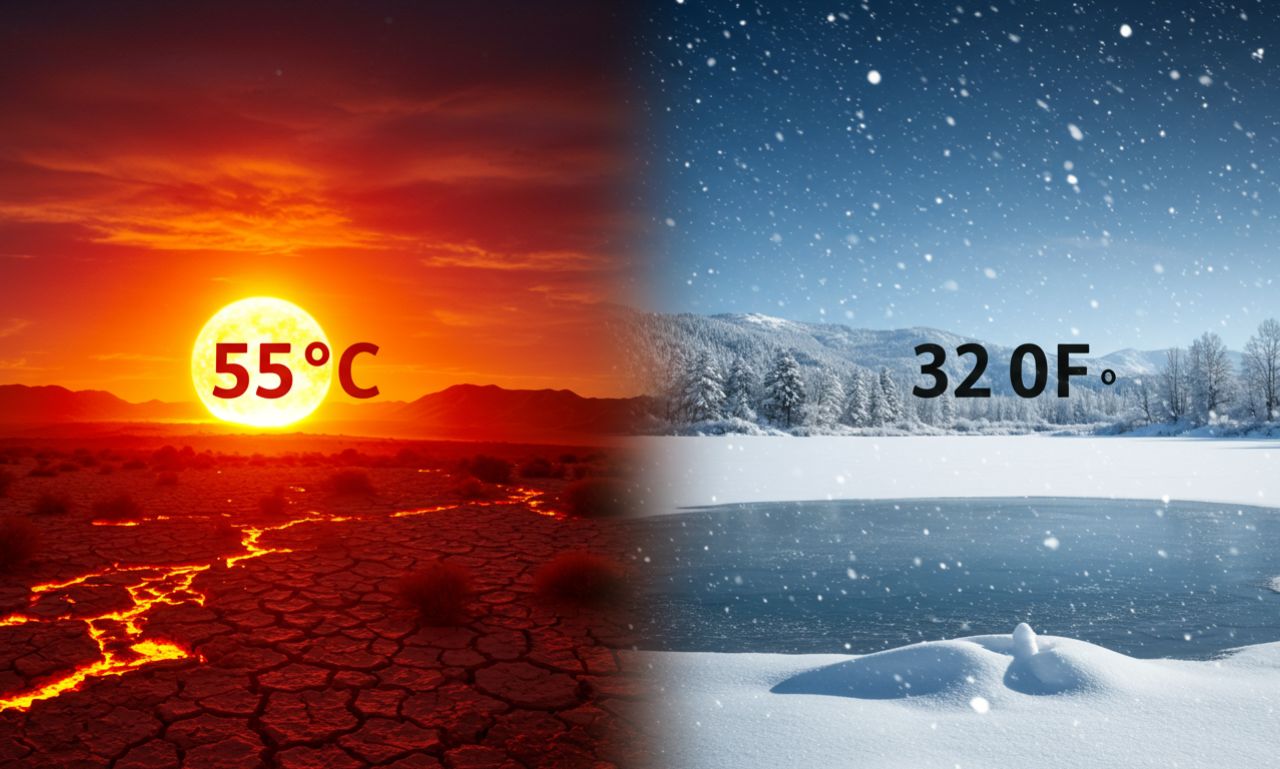Whether you’re reading a weather report, cooking with an international recipe, or conducting a science experiment, understanding how to convert Celsius to 55c to f is a valuable skill.
Many people across the globe use degrees Celsius (°C), while others—especially in the United States—use degrees Fahrenheit (°F). If you’ve ever seen a temperature like 55°C, you may wonder how hot that is in Fahrenheit.
Let’s explore the conversion process and the real-world meaning behind this number.
Quick Answer: 55c to f
To convert 55°C to Fahrenheit, you use this standard formula:
°F = (°C × 9/5) + 32
So:
(55 × 9/5) + 32 = 99 + 32 = 131°F
Result: 55°C = 131°F
Understanding the Celsius to Fahrenheit Formula
The Conversion Breakdown:
The Celsius and Fahrenheit scales are both used to measure temperature, but they use different zero points and increments.
-
Celsius: Based on the freezing point of water (0°C) and boiling point (100°C)
-
Fahrenheit: Freezing point of water at 32°F and boiling point at 212°F
To convert, follow these steps:
-
Multiply the Celsius temperature by 9/5
-
Add 32 to the result
That gives you the equivalent temperature in Fahrenheit.
Is 55°C or 131°F Hot?
Yes—very hot.
In both Celsius and Fahrenheit, 55 degrees indicates extreme heat. Here’s some context:
-
Body temperature: ~37°C (98.6°F)
-
A hot summer day: ~30–35°C (86–95°F)
-
Sauna temperature: ~50–90°C (122–194°F)
-
Boiling water: 100°C (212°F)
At 55°C or 131°F, we’re talking about:
-
Very hot industrial environments
-
Desert surface temperatures at peak midday
-
Overheated car interiors
-
Extreme sauna or steam room settings
Prolonged exposure to this temperature can cause heat exhaustion or heatstroke without proper precautions.
Real-World Examples of 55°C / 131°F
1. Automotive Safety
In summer, a parked car’s interior can quickly reach 50–60°C (122–140°F). This makes 55°C a critical reference for car safety warnings, especially regarding children and pets.
2. Saunas and Wellness
Some dry saunas operate between 50°C and 90°C (122–194°F). At 55°C, the heat is intense but tolerable for most healthy individuals during short sessions.
3. Industrial & Engineering Applications
Some materials and electronics must be tested to perform safely under conditions reaching or exceeding 55°C, especially in manufacturing, aerospace, or military fields.
4. Desert Weather
While the air temperature may not reach 55°C, ground or sand surface temperatures in extreme deserts (like the Sahara or Death Valley) often do.
Helpful Celsius to Fahrenheit Conversion Table
| Celsius (°C) | Fahrenheit (°F) |
|---|---|
| 0°C | 32°F |
| 25°C | 77°F |
| 37°C | 98.6°F (body temp) |
| 40°C | 104°F |
| 50°C | 122°F |
| 55°C | 131°F |
| 100°C | 212°F (boiling) |
Why Two Temperature Scales Exist
The use of Celsius is standard in most of the world and the metric system, while Fahrenheit is used primarily in the United States and a few Caribbean nations.
Celsius is more intuitive for scientific measurements and aligns with the metric system, while Fahrenheit provides a wider temperature range for everyday weather and comfort-level distinctions.
Knowing how to convert between them allows you to:
-
Follow international recipes
-
Understand global weather reports
-
Set proper thermostat temperatures when traveling
-
Work across scientific or engineering disciplines
Simple Conversion Tips
If you’re converting on the go and don’t want to use the full formula, here’s a quick method:
-
Multiply the Celsius temperature by 2 and add 30
-
(This gives an approximate Fahrenheit value)
-
For 55°C: (55 × 2) + 30 = 110 + 30 = 140°F
Approximate, but close to the actual value of 131°F
Use this shortcut for quick estimates when precision isn’t critical.
Conclusion: Understanding 55c to f
Now you know that 55°C equals 131°F, and that it represents extreme heat, often found in high-temperature environments like saunas, hot vehicles, or industrial settings.
Converting between Celsius and Fahrenheit is simple once you understand the formula, and it gives you the tools to interpret temperatures accurately—no matter where you are in the world.
Whether you’re protecting electronics, cooking, or just packing for a trip to a desert climate, understanding this conversion could come in very handy!
